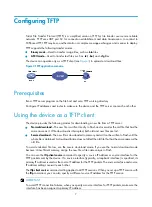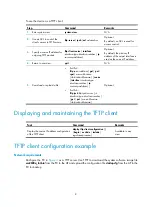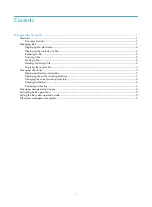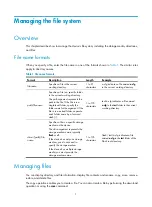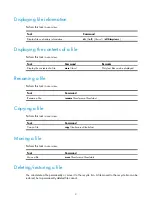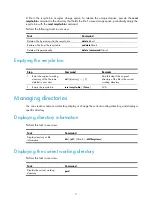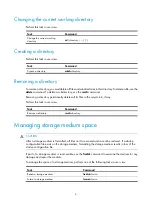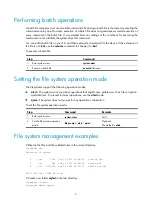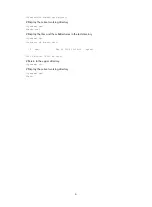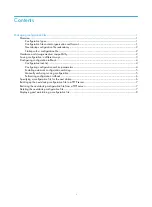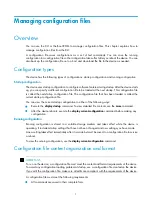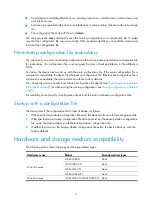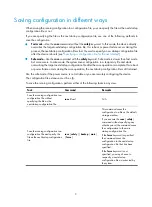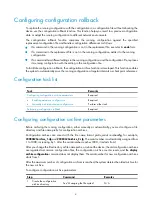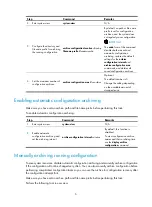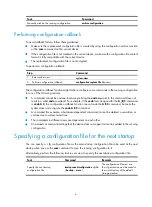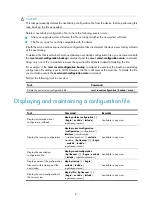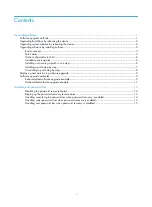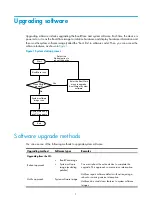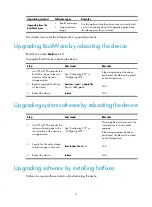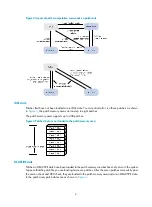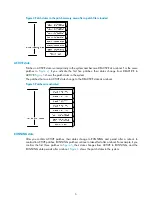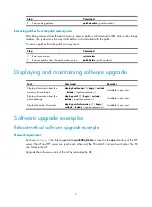
3
Saving configuration in different ways
When saving the running configuration to a configuration file, you can specify the file as the next-startup
configuration file or not.
If you are specifying the file as the next-startup configuration file, use one of the following methods to
save the configuration:
•
Fast mode
—Use the
save
command without the
safely
keyword. In this mode, the device directly
overwrites the target next-startup configuration file. If a reboot or power failure occurs during this
process, the next-startup configuration file is lost. You must re-specify a new startup configuration file
after the device reboots (see "
Specifying a configuration file for the next startup
").
•
Safe mode
—Use the
save
command with the
safely
keyword. Safe mode is slower than fast mode,
but more secure. In safe mode, the system saves configuration in a temporary file and starts
overwriting the target next-startup configuration file after the save operation is complete. If a reboot
or power failure occurs during the save operation, the next-startup configuration file is still retained.
Use the safe mode if the power source is not reliable or you are remotely configuring the device.
The configuration file extension must be .cfg.
To save the running configuration, perform either of the following tasks in any view:
Task Command
Remarks
Save the running configuration to a
configuration file without
specifying the file as the
next-startup configuration file.
save
file-url
N/A
Save the running configuration to a
configuration file and specify the
file as the next-startup configuration
file.
save
[
safely
] [
backup
|
main
]
[
force
]
This command saves the
configuration to a file on the default
storage medium.
If you execute the
save
[
safely
]
command without specifying any
other keyword, the command saves
the configuration to the main
startup configuration file.
If the
force
keyword is specified,
the command saves the
configuration to the next-startup
configuration file that has been
specified.
If the
force
keyword is not
specified, you may choose to
re-specify a next-startup
configuration file as instructed by
the system.


